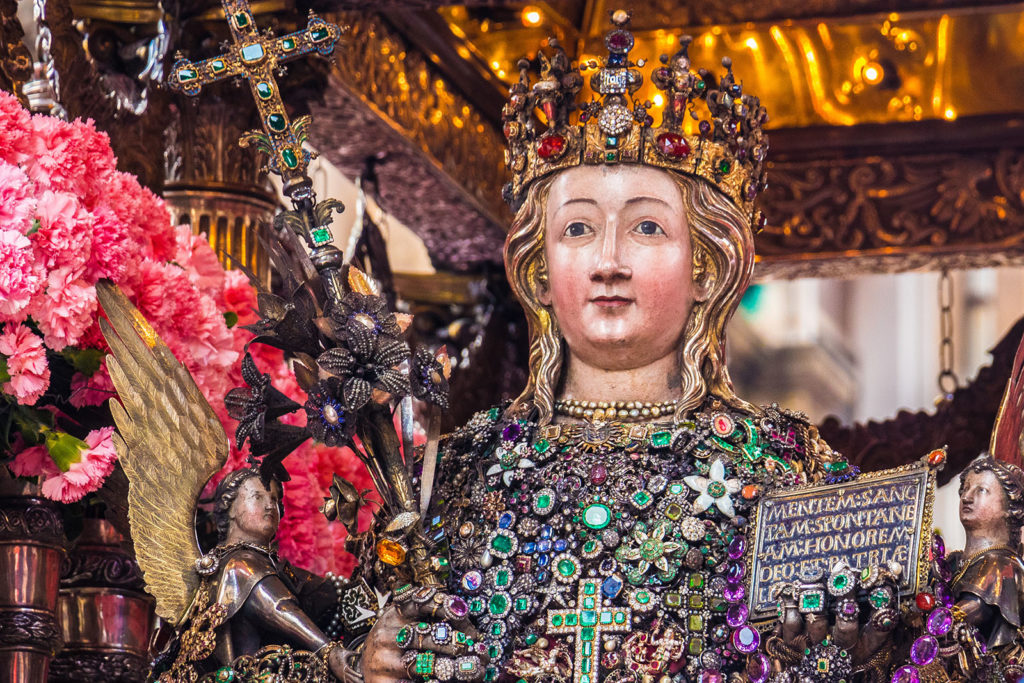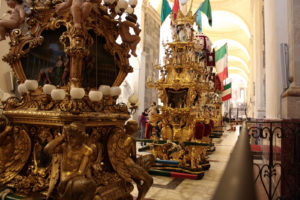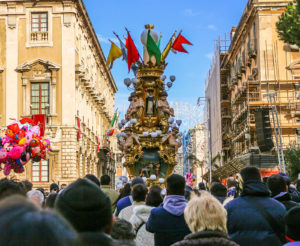The worship of
St. Agatha
is highly important for the community of Catania’s identity.
The agatini places (places that worship St. Agatha) are not only a document of faith, history and art, but they become a veritable cultural identity card in which the community recognises itself. For this reason, the feast and celebrations of St. Agatha actively involve the entire city.
Every year, from 3rd to 5th February, Catania offers its patron saint an extraordinary feast. Processions in the location of the martyrdom, fireworks, the parade of the saint’s reliquary bust and the day of the candelore take place.

This day is reserved for the evocative tradition of the candelore (candelabra), veritable wooden works of art of remarkable sizes, which also pass in front of the Badia di Sant’Agata (St. Agatha’s Abbey) during the procession.
Tradition also has it that they weigh as much as those asking for the Saint’s protection and are carried on the shoulders of between 4 and 12 people.
The candelabra procession always parades in the same order: first is the candelabra of Monsignor Ventimiglia, followed by the candelabra of the inhabitants of the San Giuseppe La Rena quarter, then that of the gardeners and florists. The fourth is the candelabra of the fishmongers.
Then come the greengrocers, the most elegant candelabra nicknamed the “signorina” (young lady), then the candelabra of the butchers, pasta makers, “pizzicagnoli” (delicatessen shopkeepers) and innkeepers, followed by the candelabra of the bakers, the heaviest of all, named “mamma” (mum). The procession is closed by the candelabra of the St. Agatha recreation club.

